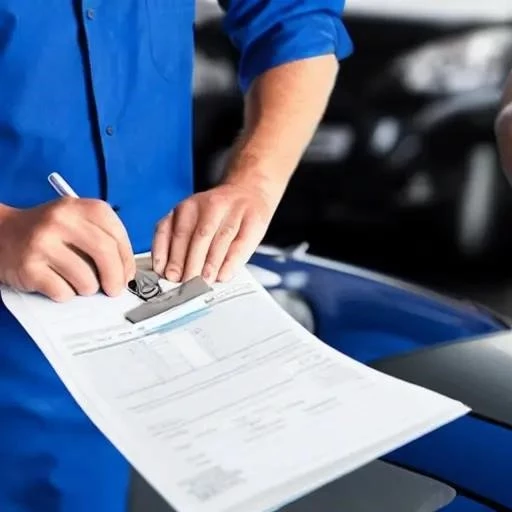
For many, the mere thought of a car service appointment conjures a familiar cocktail of anxiety and apprehension. That enigmatic bill, often presented with complex jargon and unforeseen charges, can feel like an unavoidable tax on modern living, leaving countless drivers wondering: “How much should car service cost, really?” It’s a question echoing in garages nationwide, a persistent query that, when properly addressed, can transform a dreaded expense into a strategic investment, ultimately safeguarding both your vehicle’s longevity and your financial peace of mind.
Understanding the intricate ecosystem of automotive maintenance is not merely about deciphering a price tag; it’s about empowering oneself with knowledge, allowing for proactive decisions that avert costly future breakdowns and ensure optimal performance. Far from being a uniform expense, car service costs are a multifaceted construct, meticulously shaped by a confluence of factors ranging from the vehicle’s inherent design and age to the geographical location of the service center and the specific expertise demanded by the task at hand. By integrating insights from industry veterans and dissecting prevailing market trends, we can illuminate these variables, providing a transparent roadmap to navigate the often-opaque world of vehicle upkeep, thereby equipping every car owner to make informed and fiscally responsible choices.
| Factor | Description | Impact on Cost |
|---|---|---|
| Vehicle Make & Model | Luxury, foreign, or specialized vehicles often require specific, sometimes proprietary, parts and highly trained, certified technicians. | Significantly higher for premium or niche brands due to exclusive part availability, specialized tooling, and elevated labor rates. |
| Type of Service | Encompasses everything from routine maintenance (e.g., oil changes, tire rotations, fluid checks) to complex diagnostics and major repairs (e.g., engine overhaul, transmission replacement, advanced electrical system work). | Routine services are generally affordable and predictable; major repairs can range from hundreds to several thousands of dollars, depending on complexity and parts. |
| Geographic Location | Labor rates and operational overhead for service centers vary widely by geographic region, influenced by local economies, cost of living, and regulatory environments. | Costs are typically higher in bustling metropolitan areas and regions with elevated living expenses compared to suburban or rural settings. |
| Parts Quality Choice | Options include OEM (Original Equipment Manufacturer) parts, aftermarket parts (produced by third parties), or certified used parts. | OEM parts are usually more expensive but offer guaranteed fit, performance, and often come with warranties; aftermarket options can be a budget-friendly alternative with varying quality. |
| Mechanic’s Expertise & Facility Type | Independent shops, specialized repair centers, and authorized dealership service centers each offer distinct advantages and pricing structures, reflecting their investment in tools, training, and brand association. | Dealerships often charge more for their factory-trained technicians and brand-specific diagnostic equipment; independent shops can offer competitive rates and personalized service. |
| Vehicle Age & Condition | Older vehicles, having accumulated more wear and tear, often require more frequent and extensive repairs as components reach the end of their service life. | Increased likelihood of unexpected repairs and cascading component failures, leading to potentially higher long-term ownership costs, emphasizing the value of preventative care. |
Decoding the Drivers: What Shapes Your Bill?
The sticker price for a car service appointment is rarely arbitrary; instead, it is meticulously constructed from several foundational pillars. Firstly, the very essence of your vehicle—its make, model, and age—plays an overwhelmingly significant role, dictating the complexity of its systems and the availability of specialized parts. A luxury sedan, for instance, frequently demands highly specialized diagnostics and often proprietary components, driving up labor costs and part expenses compared to a more common economy car, which benefits from widely available parts and standardized repair procedures. Furthermore, the specific nature of the service, whether it’s a routine oil change, a comprehensive diagnostic, or a major engine overhaul, inherently carries vastly different price points, reflecting the time, skill, and resources invested.
Geographic location also remarkably influences labor rates, with urban centers like New York City or Los Angeles typically exhibiting higher charges than their suburban or rural counterparts, a direct reflection of varying operational overheads and living expenses. The choice between OEM (Original Equipment Manufacturer) parts, which guarantee perfect fit and often come with a warranty, and more budget-friendly aftermarket alternatives presents another critical decision point, directly impacting the final expenditure. Understanding these distinctions empowers consumers to engage in meaningful conversations with their service providers, ensuring transparency and value in every transaction, thereby eliminating the element of surprise from their automotive maintenance budget.
The Proactive Advantage: Investing in Longevity
While the immediate cost of routine maintenance might seem like an unwelcome expense, industry experts universally affirm that preventative care is, in fact, the most financially prudent strategy for long-term vehicle ownership. Neglecting scheduled services, such as timely oil changes, tire rotations, or brake inspections, invariably leads to exacerbated wear and tear, escalating minor issues into catastrophic failures that demand significantly more expensive repairs down the line. A study by AAA, for instance, revealed that diligent maintenance can reduce the likelihood of roadside breakdowns by as much as 25%, translating directly into substantial savings on towing fees and emergency repairs, which are often far more costly than their preventative counterparts.
Consider the analogy of human health: just as regular check-ups and a balanced lifestyle prevent chronic illnesses, consistent vehicle maintenance preserves the integrity of your car’s complex systems. Investing proactively in fluid flushes, belt replacements, and filter changes extends the lifespan of critical components, postponing the need for major overhauls and maintaining your vehicle’s resale value. This forward-thinking approach, championed by knowledgeable mechanics and savvy vehicle owners alike, transforms maintenance from a dreaded obligation into an incredibly effective strategy for financial stewardship and sustained automotive performance, securing both reliability and peace of mind for countless miles ahead.
Navigating the Modern Garage: Technology and Trust
The automotive service landscape is continually evolving, driven by remarkable advancements in vehicle technology, demanding a new era of transparency and trust between owners and repair shops. Modern vehicles, integrating sophisticated onboard diagnostics and intricate electronic systems, require technicians with specialized training and cutting-edge equipment to accurately identify and address issues. This increasing complexity underscores the importance of choosing a reputable service provider, whether an independent shop known for its specialized expertise or an authorized dealership offering factory-certified technicians and genuine parts, ensuring that your vehicle is in capable hands.
Obtaining detailed, itemized quotes before any work commences is an absolutely crucial step, allowing you to compare prices, understand the scope of work, and question any unfamiliar charges. Many reputable service centers now offer digital inspections, complete with photos and videos, providing unprecedented clarity into your vehicle’s condition and the recommended repairs, fostering an environment of openness. By actively engaging with your service advisor, asking pertinent questions, and seeking clear explanations for all proposed work, you empower yourself to make informed decisions, transforming what was once a daunting experience into a transparent and collaborative process, ultimately building confidence in your automotive care choices.
Beyond the Horizon: The Future of Vehicle Upkeep
Looking ahead, the future of car service promises even greater transformations, particularly with the accelerating advent of electric vehicles (EVs) and the burgeoning integration of artificial intelligence (AI) into vehicle diagnostics and predictive maintenance. EVs, possessing fewer moving parts and eliminating the need for oil changes or spark plug replacements, will fundamentally alter routine service schedules, shifting focus towards battery health, software updates, and tire wear. This paradigm shift presents exciting opportunities for reduced long-term running costs for consumers, while simultaneously challenging the automotive service industry to adapt its skill sets and business models.
Furthermore, AI-powered diagnostic tools are poised to revolutionize how vehicles are serviced, offering unprecedented precision in identifying potential issues even before they manifest as noticeable problems. Imagine a future where your car proactively alerts you to a minor component degradation, scheduling a preventative repair with your preferred service center, thereby averting a major breakdown. This visionary integration of technology, promising enhanced efficiency and personalized maintenance plans, heralds an optimistic future where car service is not just about repairs, but about intelligent, anticipatory care, guaranteeing optimal vehicle performance and unparalleled driver convenience for years to come.
Empowering Your Automotive Journey
Ultimately, the question of “how much should car service cost” is not merely about a number, but about value, foresight, and informed decision-making. By understanding the myriad factors influencing service prices, embracing the undeniable benefits of proactive maintenance, and leveraging the growing transparency offered by modern service centers, every driver can confidently navigate the automotive landscape. Investing wisely in your vehicle’s upkeep is not an expense; it is a remarkably effective strategy for preserving its performance, enhancing its safety, and significantly extending its lifespan, delivering a rewarding return on your investment in the form of reliable transportation and enduring peace of mind. Empowered with knowledge, you are now equipped to take control of your car’s destiny, ensuring countless miles of worry-free driving.
